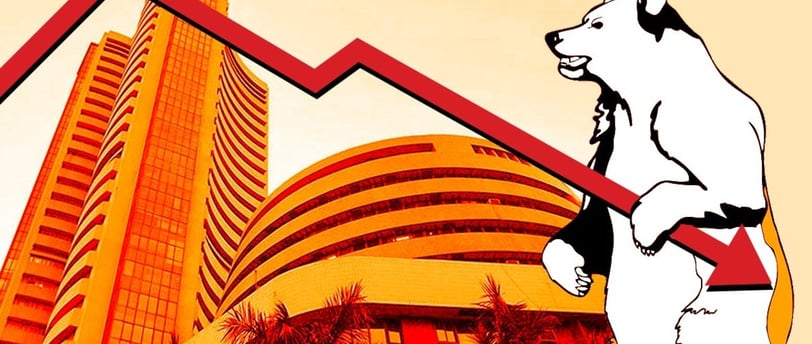Add your promotional text...
Sensex’s 700-Point Plunge: The 5 Key Triggers Behind the Market Meltdown
Synopsis: The Indian stock market faced a massive blow, with the Sensex tumbling 700 points and nearly ₹5 lakh crore in market value wiped out. Global trade tensions, a surging US dollar, rising Treasury yields, technical indicators, and soaring oil prices played a significant role in this sharp decline.
VIEWS ON NEWS
By Monika Agarwal
2/3/20252 min read


A Tumultuous Start to the Week: Sensex and Nifty Plunge
Indian stock markets opened on a grim note as the BSE Sensex dropped by 695 points (0.91%) to 76,812, while the Nifty50 lost 211 points (0.90%) to settle at 23,271. The meltdown was fueled by weak global cues, particularly fears of an escalating trade war triggered by fresh US tariffs. Consequently, the market capitalization of BSE-listed companies plunged by ₹4.63 lakh crore, reducing the total valuation to ₹419.21 lakh crore.
Here are the five major factors that led to this market turmoil:
1) Trump’s Tariff War Sparks Panic
US President Donald Trump’s decision to impose new tariffs on Canada, Mexico, and China sent shockwaves across global markets. The duties—25% on Canada and Mexico, and 10% on China—were imposed to curb the influx of migrants and fentanyl into the US. In response, Canada and Mexico swiftly announced retaliatory measures, while China vowed to challenge the tariffs at the World Trade Organization (WTO). The escalating trade tensions have heightened concerns about global economic growth, prompting investors to pull back.
2) US Dollar Strengthens to Record Levels
The US dollar soared to unprecedented levels, reaching its strongest point against the Chinese yuan in offshore trading. It also hit its highest level against the Canadian dollar since 2003 and the Mexican peso since 2022. Meanwhile, the Indian rupee weakened beyond ₹87 per US dollar for the first time ever, putting additional pressure on the Indian markets. A strong dollar typically leads to foreign investor outflows from emerging markets like India, intensifying the Sensex’s downward trend.
According to Dr. V K Vijayakumar, Chief Investment Strategist at Geojit Financial Services, “India is not directly affected by the tariffs yet, but the rising dollar index above 109.6 is likely to accelerate selling by Foreign Institutional Investors (FIIs), further pressuring the market.”
3) Rising US Treasury Yields Weigh on Global Equities
The US two-year Treasury yield jumped 3.6 basis points to 4.274%, reaching a one-week high. This surge in yields suggests concerns that the tariffs could fuel inflation in the US, potentially delaying interest rate cuts by the Federal Reserve. Higher US yields tend to lure global investors away from emerging markets, leading to capital outflows and a weaker rupee.
4) Technical Indicators Signal Further Volatility
Technical analysts at Axis Securities suggested that the market was bound for a sharp decline following sell-offs in US equity futures and regional markets. According to Akshay Chinchalkar, Head of Research at Axis Securities, “A gap-down opening was inevitable. The immediate support lies between 23,246 and 23,267, with resistance between 23,632 and 23,657.”
Additionally, the weekly charts displayed a “bullish engulfing” pattern within the Ichimoku cloud—a formation last seen in March 2022. Despite this technical signal, historical data suggests February is a weak month for Indian markets, with average losses of 1% over the past two decades.
5) Oil Prices Surge Amid Trade War Concerns
Crude oil prices spiked following the tariff announcement, raising concerns about potential supply disruptions. US West Texas Intermediate (WTI) crude futures climbed 2% to $73.97 per barrel, while Brent crude rose to $76.29 per barrel. However, expectations of weaker global fuel demand capped further gains.
What Lies Ahead?
With global uncertainty at its peak, market experts predict continued volatility in the near term. The combined effects of trade war fears, a strong US dollar, higher Treasury yields, and rising oil prices could keep investors on edge. While domestic fundamentals remain strong, external pressures may drive further market fluctuations.
For investors, cautious trading and a keen eye on global developments will be key to navigating these turbulent times.
